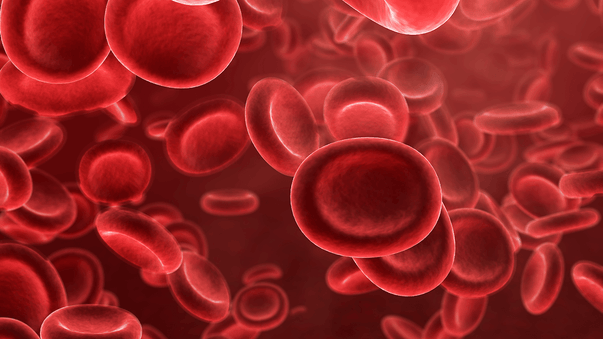Physical Activity Linked to Mental Wellbeing

Frontier biomedical research continues to advance, as shown by the recent news summaries below. But we shouldn’t forget what we can and should do, here and now, to improve our physical and mental wellbeing. One word: Exercise. The mental benefits of exercise have been discussed at a Cognitive Neuroscience Society symposium.
"There is a strong and direct link between physical activity and how your brain works," says symposium chair Wendy Suzuki of New York University. "People still do not link physical health to brain and cognitive health; they think about fitting into a bikini or losing that last pound, not about all the brain systems they are improving and enhancing every time they work out."
Researchers led by Michelle Voss of University of Iowa are studying how different types, amounts, and intensities of physical activity improve brain function. In the meantime, Voss says: “Think about how physical activity may help your cognition today and see what works. Day-by-day, the benefits of physical activity can add up.”
Designer organelle builds proteins in living mammalian cells. Scientists at EMBL, JGU Mainz, and IMB Mainz have engineered the complex biological process of translation into a designer organelle in a living mammalian cell. The membraneless organelle can build proteins from natural and synthetic amino acids carrying new functionality. The findings, published in Science, allow scientists to study, tailor, and control cellular function in more detail.
Prevascularized Tissue for Cardiac Patches. Biomedical engineers at Michigan Technological University have developed methods to ensure highly aligned, dense and mature microvasculature in engineered tissue that can be used for cardiac patches. A research paper, to be published in Theranostics, focuses on developing a stem cell cardiac patch made with tissue engineered with tiny blood vessels to be like real heart muscles. A review paper, published in Acta Biomaterialia, examines the pros and cons of six innovative strategies for aligning the microvessels in engineered tissues.
Starving pancreatic cancer cells to death. Scientists at University of Texas may have identified a new approach to starve the cells of one of the most common and deadly cancers, pancreatic cancer. Cancer cells demand enormous amounts of molecular “food” to survive and grow, and therefore “starving” them is considered as a promising way to treat cancer. A study published in Nature suggests that a protein, called syndecan-1 (SDC1), is a promising target for therapeutic intervention.
New drugs increase muscle and bone mass in mice. Researchers at Aarhus University and Erasmus Medical Center have studied a new group of medicinal products that increase the muscle and bone mass of laboratory mice over a few weeks. The findings, reported in a study published in The FASEB Journal, offer hope to the elderly and people suffering from weak muscles and bones due to illness.
Real time monitoring system for cancer immunotherapy. Johns Hopkins researchers have used positron emission tomography (PET) scans to calculate in real time how much of an immunotherapy drug reaches a tumor and what parts of a cancer remain unaffected. According to the scientists, the research results, described in a study published in Journal of Clinical Investigation, represent a necessary initial step toward finding safe, effective and personalized doses of immunotherapy.
Life-extension pathway in worms. Scientists at Scripps Research have found that an enzyme-blocking molecule can extend the lifespan of Caenorhabditis elegans roundworms by as much as 45 percent, largely by modulating a cannabinoid biological pathway, according to a new study published in Nature Chemical Biology. The researchers used small-molecule compounds to disrupt enzyme-related pathways in adult worms to uncover pathways that regulate lifespan.
MicroRNA processing could enable new therapies for cancer and other diseases. Researchers at Virginia Commonwealth University are investigating how the mda-7/IL-24 gene influences microRNAs to suppress a range of cancer types. New findings, reported in a research paper published in PNAS, could potentially have implications beyond cancer for a variety of cardiovascular and neurodegenerative diseases caused by the same microRNA-driven processes.
Cell-free, synthetic biological logic gate. Scientists at EPFL have built a synthetic biological logic gate, which could one day be used to introduce new functions into cells. The new biological logic gate, described in a research paper published in PNAS, takes an input of transcription factors and generates a binary output: the gene is either on (activated) or off (repressed). The research results permit studying and even predicting gene expression, without using cells. The process closely mimics what happens in living cells, and permits studying biological phenomena without having to modify living cells each time.
More Articles
Don't miss a beat! In our Pulse Newsletter, Thrivous curates the most important news on health science and human enhancement, so you can stay informed without wasting time on hype and trivia. It's part of the free Thrivous newsletter. Subscribe now to receive email about human enhancement, nootropics, and geroprotectors, as well as company news and deals.
Read more articles at Thrivous, the human enhancement company. You can browse recent articles in Thrivous Views. See other Pulse Newsletter articles. Or check out an article below.
-
Omega 3 in Blood Cells Is Associated with Longevity
I recently heard about the All of Us research program in the USA. It is a study looking at genetics ...
-
Enhance Cognition with Nuts and Boswellia
A few things come to mind when I think about my grandparents’ home: a jar of butterscotch candies, the orange ...


